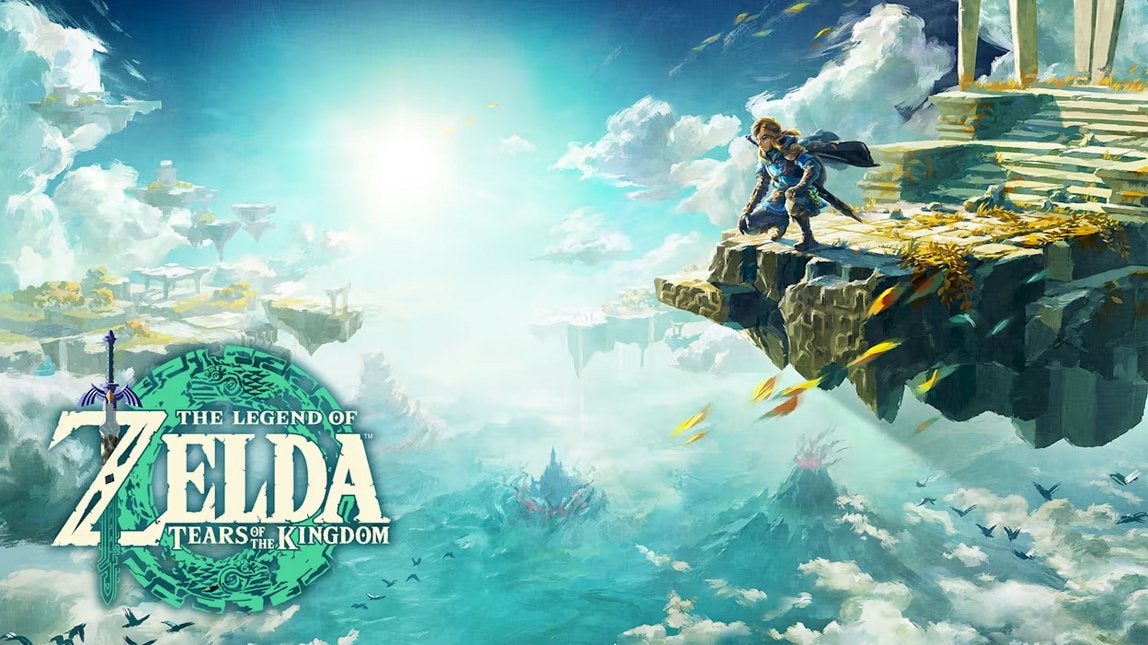Verdict
The Legend of Zelda: Tears of the Kingdom doesn’t stray too far away from the hugely successful template of Breath of the Wild. But by reinforcing its predecessor’s strength for experimentation with the new building mechanics, while also telling an engaging story and opening up new locations to explore, this is a perfect sequel to the greatest game to ever grace the Nintendo Switch.
Pros
- New building mechanic opens up endless possibilities
- Hyrule feels even bigger with new locations to explore
- New fuse ability offsets frustrations for weapon durability
- An engaging story that builds on Breath of the Wild
Cons
- Dungeons still feel lacklustere compared to old Zelda games
- Slightly choppy performance due to ageing hardware
- Some controls can feel a little clumsy
Availability
- UKRRP: £51.99
- USARRP: $69.99
Introduction
The Legend of Zelda: Breath of the Wild is regarded as one of the very best games of the last decade – if not, all time. So with Tears of the Kingdom arriving as a successor on the ageing Nintendo Switch, it had almighty expectations to deliver.
While the wow factor of stepping out into the open-world wilderness of Hyrule has no doubt diminished six years on, Nintendo has succeeded in creating a fantastic sequel that retains the key strengths of the original, but also implements many new features to prevent this sequel from feeling like a mere expansion.
Chief of these is the new building mechanic, allowing you to assemble anything that your imagination can muster, from simple bridges to fully functional hot air balloons that provide you with a bird’s eye perspective of the expansive world.
While the divisive weapon durability feature remains, with swords and bows breaking after extended use, it’s offset by the new ability to upgrade weapons by fusing them with everyday objects such as rocks, icicles, wooden barrels and more.
Factor in a new grand scale story and a transformed map to explore, and The Legend of Zelda: Tears of the Kingdom is a shining example of how to create a perfect sequel. This could well be the best Nintendo Switch game yet.
Story
- Follows the events after Breath of the Wild
- New antagonist called the Demon King
- Story cutscenes are unlocked exploring Hyrule
The Legend of Zelda: Tears of the Kingdom is set after the events of Breath of the Wild. The castle has been reclaimed and the residents of Hyrule are slowly but surely restoring the kingdom to its former glory following the cruel reign of Calamity Ganon.
Troubled by a mysterious red mist called the Gloom however, Link and Zelda decide to explore the caverns beneath the castle in search of the source. Here they find a mummification of the Demon King, a horrifying antagonist that nearly conquered the kingdom several centuries prior.
The Demon King then wakes from his slumber, inflicting Link with the deadly gloom and shattering the Master Sword into pieces. After narrowly surviving the encounter, Link finds himself on a strange floating island while Zelda has mysteriously disappeared. Link then starts a quest to find Zelda, as well as searching for ways to vanquish the Gloom that threatens to disturb the newfound peace of Hyrule.
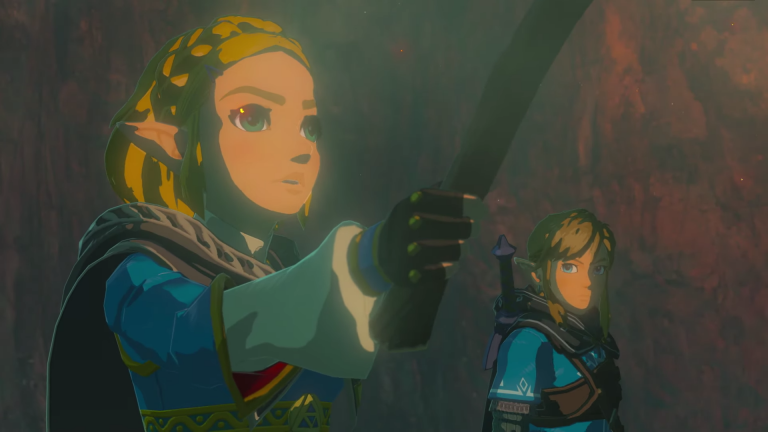
Link’s weakened state is a convenient way to force the player to start from scratch in terms of increasing the size of his health bar and amassing a new collection of weapons and armour, and yet such a move doesn’t feel forced, fitting in nicely with the overarching story.
The story is gradually pieced together upon discovering memories scattered across the land of Hyrule, which trigger entertaining cutscenes that help fill in the backstory of the Demon King, as well as providing hints as to the whereabouts of Zelda. I enjoyed these storybites so much that I’d often make purposeful detours to track down these collectible cutscenes, obtained through discovering ancient hieroglyphs.
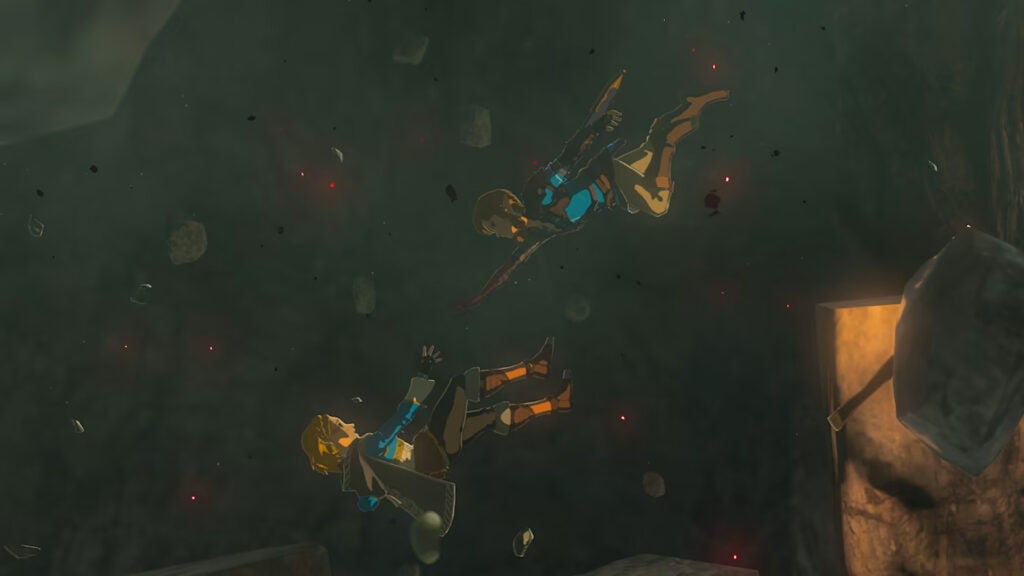
Tears of the Kingdom admittedly adopts an almost identical story template as Breath of the Wild, as Link is tasked with travelling to the homelands of each of the four tribes – Rito, Zora, Goron and Gerudo – in order to ask for aid.
A deeper delve into the backstory of an ancient race known as the Zonai at least provides a welcome differentiator from Breath of the Wild, while also providing Link access to new abilities and technology.
I’m a big fan of the story in Tears of the Kingdom, and while it doesn’t offer the same satisfying simplicity as its predecessor, it instead provides more twists and turns to keep players guessing right until the very end.
Exploration and puzzles
- Can explore new floating islands and underground caverns
- New building mechanic encourages experimentation
- Dungeons still don’t feel as intricate as past Zelda entries
The Legend of Zelda: Tears of the Kingdom takes place in the kingdom of Hyrule, the same location as Breath of the Wild, but since the rise of the Demon King a few things have changed to prevent the map from being too familiar.
Wide chasms have emerged all over the world, making it more difficult to reach certain locations. Travelling down into these chasms will also reveal new places to explore underground, usually full of high-level monsters and hidden ruins.
Sheikah Towers have been replaced with Sky Towers; they still provide the same functionality of filling in a segment of your map, but will now also catapult you into the sky. This enables you to reach the many floating islands dotted across the kingdom, each of which you can freely explore.
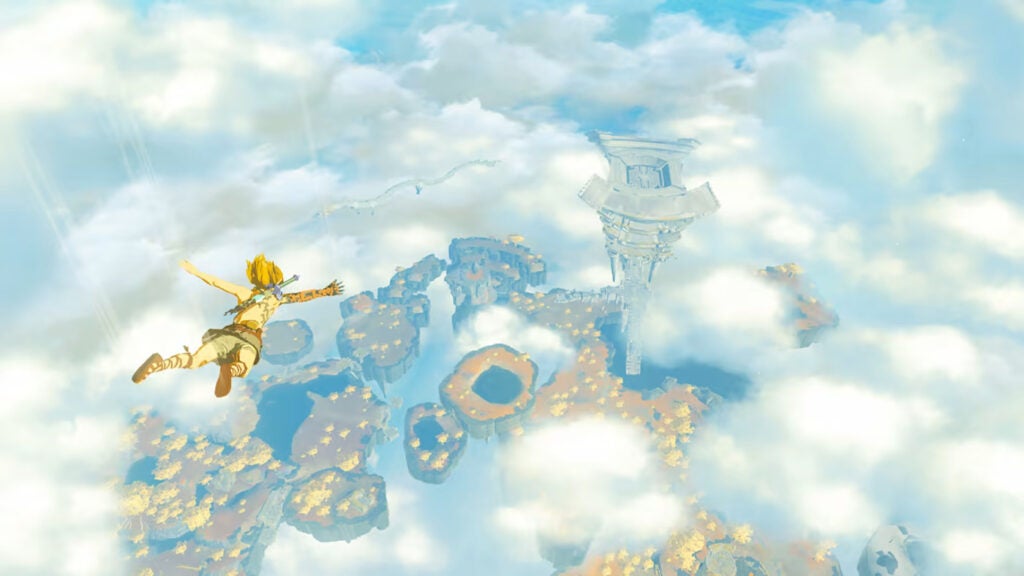
Having both underground caverns and numerous floating islands in the mix opens up a lot more places for Link to explore, making this world feel substantially bigger than that of Breath of the Wild. It’s a genius way for Nintendo to keep Hyrule fun to explore, while sticking to the same region.
You’ll also find a huge number of Shrines dotted around the map. These differ to the ones found in Breath of the Wild in terms of locations and aesthetics, but otherwise work the same as before: solve a series of the Shrine’s puzzles, and you’ll earn a currency that can be traded in to upgrade your health or stamina bar. I’ve no issue with Nintendo sticking to the same blueprint though, as the Shrines make use of the new gameplay mechanics to keep each puzzle feeling refreshingly unique.
Link no longer has access to the Sheikah Slate, which means he can’t use abilities such as creating bombs and freezing time. Instead, he is granted the powers of the Zonai, which mostly revolve around a new building mechanic.
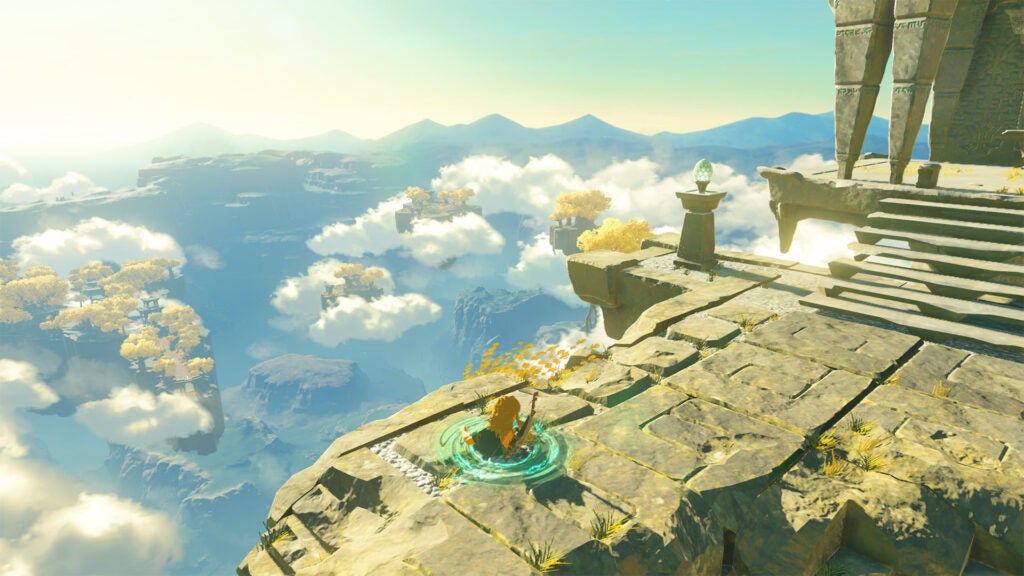
Link is now able to create new structures by glueing multiple objects together. At first, I was a little sceptical about this new feature, especially as someone who lacks the patience for the building mechanics in games such as Fortnite and Minecraft, but Tears of the Kingdom does an excellent job of easing you in, with the mechanic initially limited to creating bridges to cross rivers and attaching a tree branch to a broken lever.
If Breath of the Wild’s focus was on nature, then Tears of the Kingdom has its sights set on technology, as you’re later provided access to several gadgets that can make your creations even more complex and useful. For example, the fan tool can be affixed to a wooden raft to create a makeshift speedboat, and when placing a burning torch underneath an assembled hot air balloon, you’ll start ascending up into the clouds.
In the latter stages of the game, you’ll unlock even more gadgets, including a steering wheel so you can assume control of wheeled creations, and rockets that turbocharge the speed of your vehicles. I love using these gadgets, as they not only make it more fun to travel around the kingdom, but also increase the scope for the Shrine’s many puzzles. I’m excited to see what kind of creations the wider Zelda community will create, with an endless number of possibilities at your fingertips.
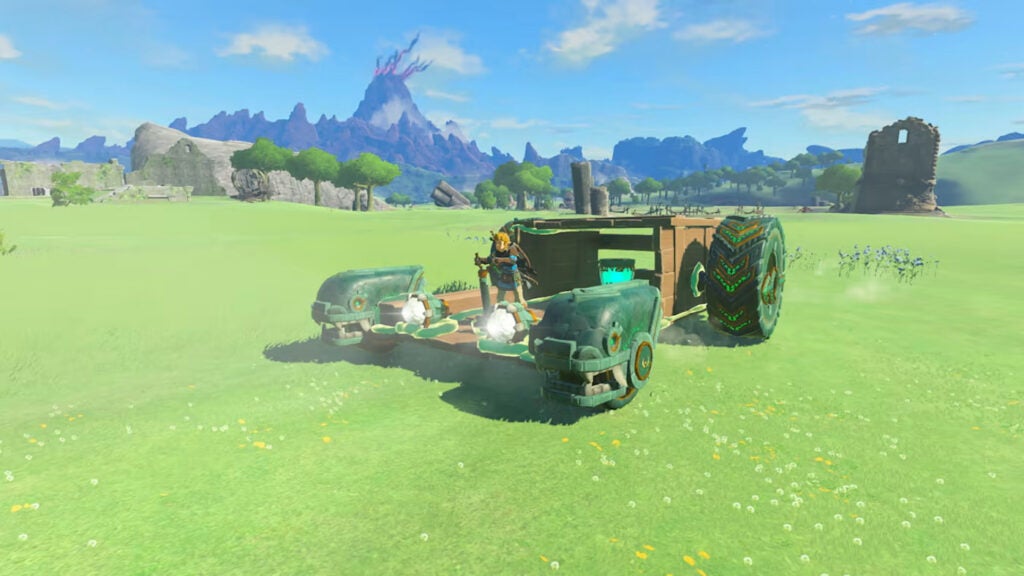
Nintendo has made sure to include a battery limit on this technology, which works similarly to your stamina wheel, requiring time to replenish after being fully depleted. You are able to upgrade the capacity of your battery, but it still nevertheless prevents you from flying around Hyrule without limit, which would have otherwise negated the challenge of travelling around the map.
Recall is another new ability that I’m a big fan of. It will reverse the trajectory of a moving object, which can be used in several creative scenarios. When a Moblin hurls a massive boulder in your direction, activating the Recall ability causes that boulder to fling back towards the monster for an uber-satisfying collision. The Recall ability can also be used for more practical scenarios, such as reversing the direction of a raft on a fast river current or altering the rotation of a cog to open a door.
Breath of the Wild excelled most when giving the player the freedom to experiment, and Tears of the Kingdom builds on this in exciting ways to further enhance your ability to interact with the world. I still grin whenever Link is struck by lightning when journeying into a rainstorm with his metal gear equipped, or how setting fire to grass will cause an updraft which Link can use to reach higher platforms.
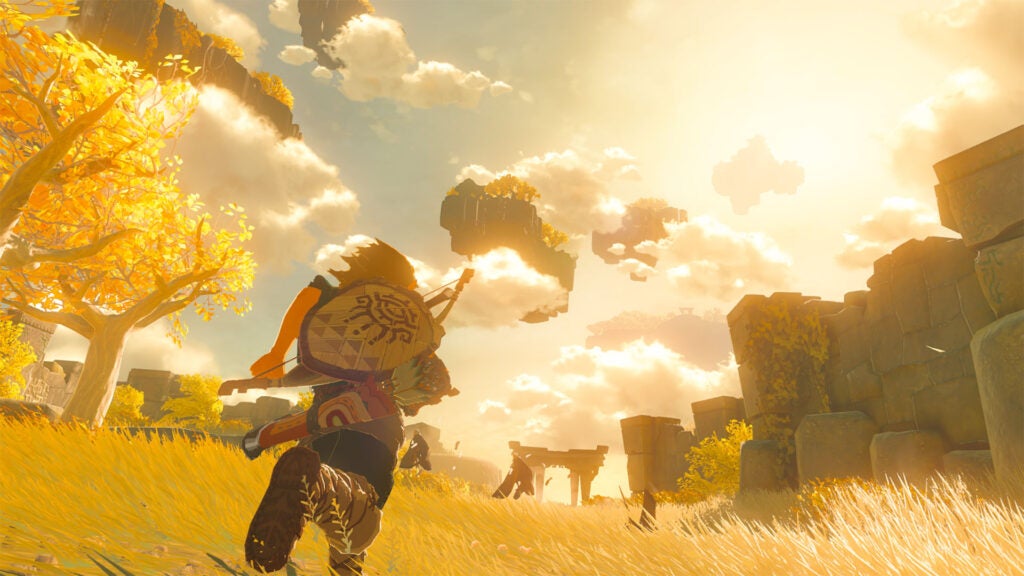
This level of interactivity makes Hyrule an absolute joy to explore, and with the abundance of puzzles, side quests, hidden loot and Shrines, I can’t wait to cover every inch of this immersive world.
I’m not so keen on the dungeon designs though. I felt that the dungeons were the weakest part of Breath of the Wild, and that’s no different here. They’re still entertaining enough, offering up challenging puzzles to solve, akin to those found in the Shrines, but they lack the intricate designs of previous Zelda entries, such as those in Ocarina of Time, Skyward Sword and Twilight Princess. The wonderfully immersive world of Hyrule easily makes up for this, but it’s still nonetheless a part of the Zelda DNA that I’m sad to see left behind.
Combat
- Accessible and engaging combat controls
- Fuse ability offsets frustrations with weapon durability
- Boss encounters are a weak point
The combat in Tears of the Kingdom is largely the same as that in Breath of the Wild, with simple controls for slashing, dodging and parrying allowing for an accessible yet rewarding experience.
The controversial weapon degradation makes a comeback, with weapons and shields shattering after extended use. In fact, Nintendo has doubled down on this feature, with the mysterious Gloom causing such gear to degrade even faster, while reducing the damage of high-grade weapons such as those found in the castle’s armoury.
Before you despair, Nintendo has at least added a new feature which makes it easier to obtain high-quality gear. A new fuse mechanic allows you to merge your weapons with any item you find in the wilderness to form a more robust mode of attack.
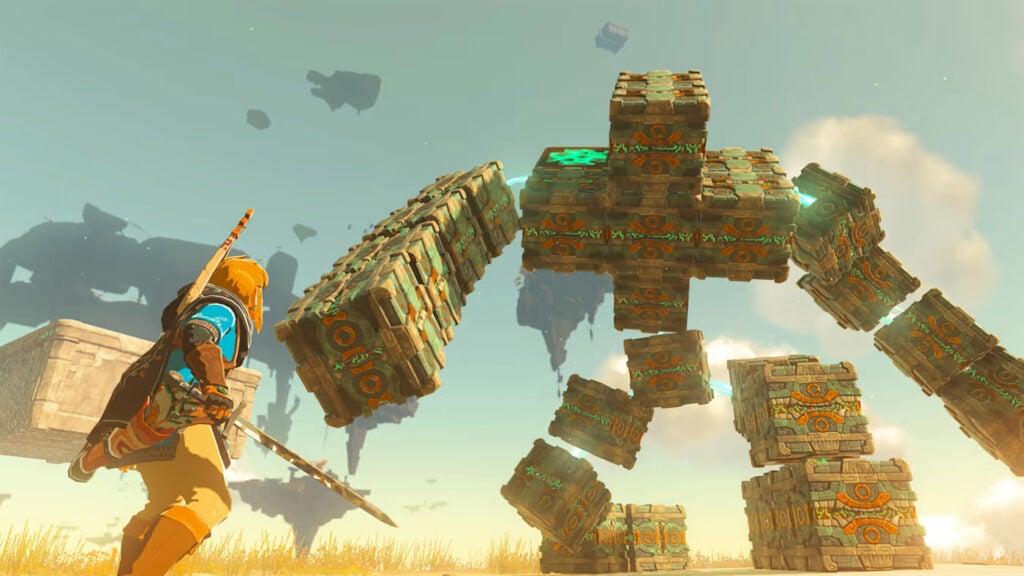
While virtually any item can be equipped to your weapon, certain objects will deal greater damage. For example, the horn of a Lizalfos or the toenail of a Hinox will increase both durability and damage substantially, providing another incentive to go hunting down enemies.
Experimentation is the key word in Tears of the Kingdom, with select inanimate objects offering surprisingly useful perks. For example, using an icicle as a weapon will freeze an enemy on contact, while fusing a ruby to a staff will allow it to create fiery blasts. This means that even a branch of wood can prove to be a useful weapon in the latter stages of the game, as long as you’ve got a powerful item you can fuse it with. This makes it significantly easier to find (or rather assemble) a high-powered weapon in a cinch, removing some of the frustrations found with Breath of the Wild.
You’re also able to attach items to arrows, with the wings of a Keese bat allowing arrows to travel longer distances, and the jelly of a Chuchu enabling elemental effects. This fusing mechanic blends so perfectly with the survival elements of The Legend of Zelda that it’s a wonder it wasn’t added earlier,…

If you want to be informed about the best technology, including everything from smartphones and cameras, to games, computing and home appliances, you’ve come to the right place.
